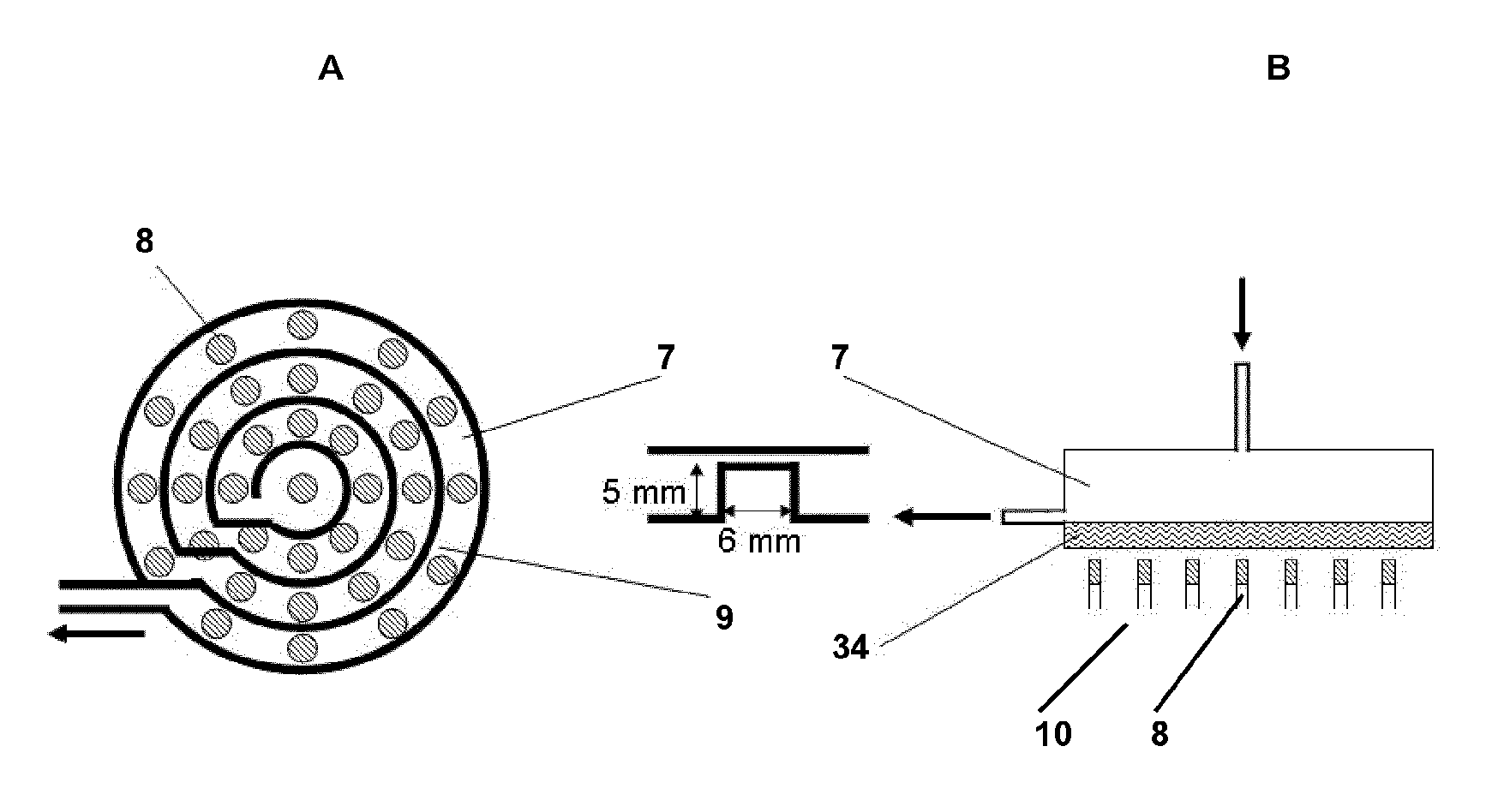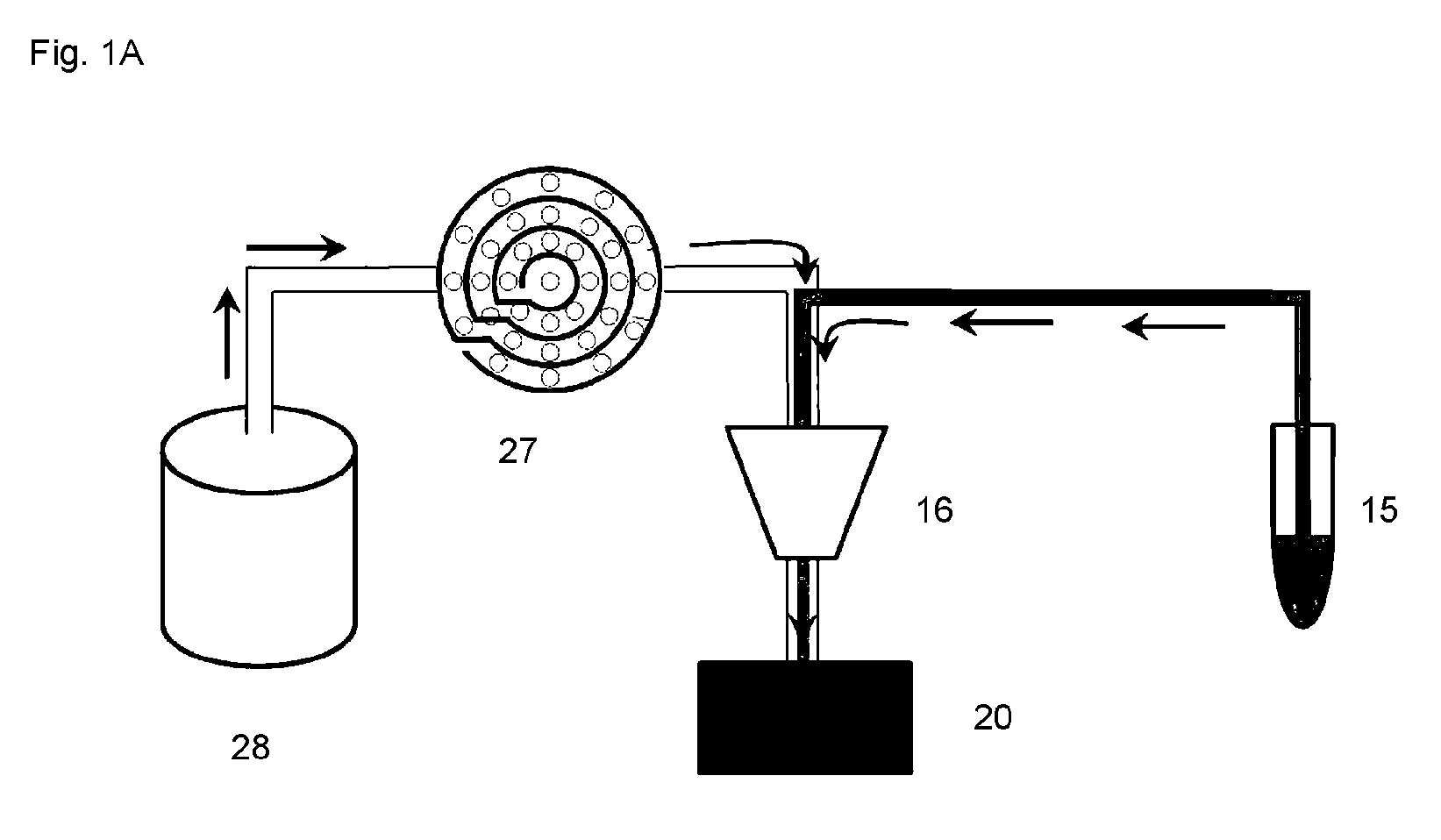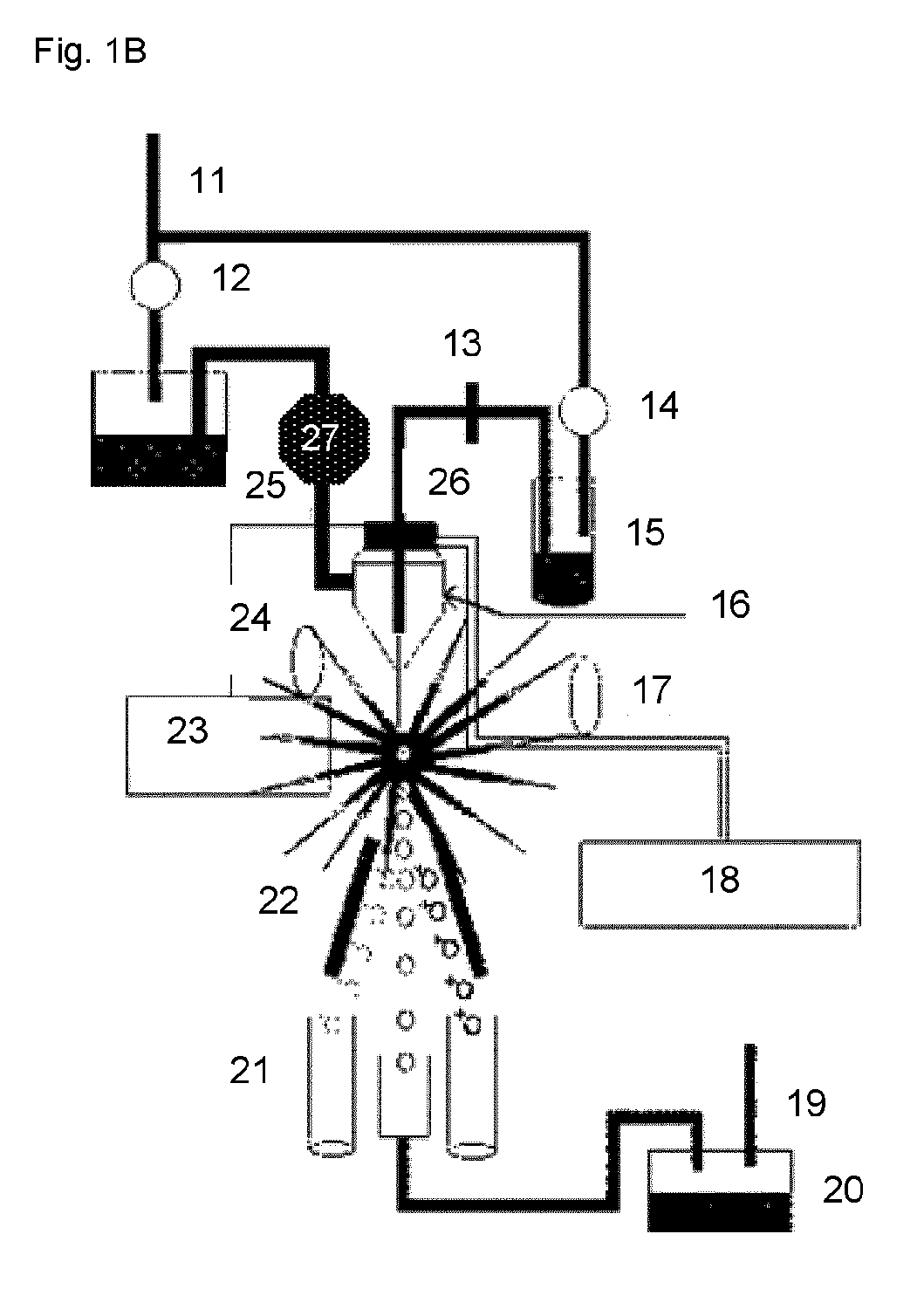Flow cytometer disinfection module
a technology of flow cytometer and disinfection module, which is applied in the direction of measurement devices, instruments, particle and sedimentation analysis, etc., can solve the problems of reducing yield, affecting the operation of flow cytometer, and ineffective filtration and centrifugation techniques, so as to save time, damage possible microorganisms in the fluid, and be easily attached to the existing cytometer.
- Summary
- Abstract
- Description
- Claims
- Application Information
AI Technical Summary
Benefits of technology
Problems solved by technology
Method used
Image
Examples
example 1
UV-C and / or UV-B Disinfection-Module Integration in a BD FACS Diva Cell-Sorter
1. Detection of any Existing Contamination in the Cell Sorter
[0070]sample taking (Phosphate Buffered Saline—PBS) from sheath container and PBS stream below the nozzle (each 100 μl)[0071]receiving the samples in Lysogeny Broth Medium (culture medium for bacteria)[0072]incubation at 37° C. in a rotating shaker[0073]after 24 h a clearly contamination was visible in both samples
2. Endotoxin Test at Different Irradiation Dose
[0074]Endotoxin is a component of the outer cell membrane of gram-negative bacteria. It can be detected by a photometric LAL-test.
[0075]
light power (mW / lightsamplesource)Endotoxin Units (EU / ml)PBS container0 (positiv control)1.01PBS flow stream*0>4.95PBS flow stream*0.22.08PBS flow stream*0.41.79PBS flow stream*0.61.55PBS flow stream*0.81.31PBS flow stream*12.08 (measurement error)PBS flow stream*0 (control)1.25PBS autoclaved0 (control)3.47*PBS taken below the nozzle
Results (See e.g. FIG. 7...
PUM
| Property | Measurement | Unit |
|---|---|---|
| UV reflectance | aaaaa | aaaaa |
| flow rates | aaaaa | aaaaa |
| flow rates | aaaaa | aaaaa |
Abstract
Description
Claims
Application Information
 Login to View More
Login to View More - R&D
- Intellectual Property
- Life Sciences
- Materials
- Tech Scout
- Unparalleled Data Quality
- Higher Quality Content
- 60% Fewer Hallucinations
Browse by: Latest US Patents, China's latest patents, Technical Efficacy Thesaurus, Application Domain, Technology Topic, Popular Technical Reports.
© 2025 PatSnap. All rights reserved.Legal|Privacy policy|Modern Slavery Act Transparency Statement|Sitemap|About US| Contact US: help@patsnap.com



